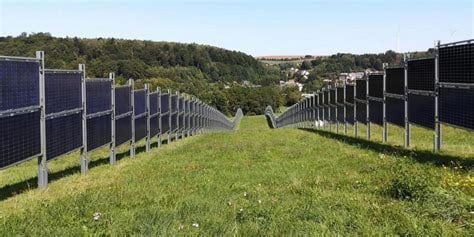The only reason I would be against this is because it disincentivizes removing large parking lots, which are primarily a waste of space. If we could replace some of that wasted space with housing (which could also have solar slapped on it) that would be ideal.
This picture/render looks like it’s in Europe, where that could maybe be feasible. In the US, though, I think we need to take what we can get.
I’ve seen this concept myself built in the Netherlands already, if I’m not mistaken
Many EV fast chargers have a solar roof over the parking spot. The one in this picture look kind of similar in design to the transparent solar roofs that Fastned puts over their chargers in the Netherlands and Germany
Parking lots ain’t going anywhere.
They are and they must. There is no path forward that doesn’t massively disinvest from personal vehicles.
They must, but they aren’t. The infrastructure investments to make mass transit preferable in sprawling cities will not happen soon enough. The people in power will not compromise their worship of free markets for climate change. Over time, the market will transition that way, but not any faster under the current system.
US auto-domination isn’t even the result of market forces though.
Don’t get me wrong, I’m not a fan of laissez-faire policy or capitalism in general, but government funded highway lanes are no more capitalist than government funded rail tracks. The current situation in the US required enormous government intervention to establish, in the form of the forced seizure of property to make way for highways, hundreds of billions of dollars (inflation adjusted) to build those highways, mandatory parking minimums for new construction (to store all the cars from the highway), government subsidies for suburban style development and later on tax schemes that resulted in poorer inner city areas subsidizing wealthy suburbs, and zoning laws that made it illegal to build a business in a residential area (which worked together with anti-loitering laws to make it so that if you didn’t live in a neighborhood you had no “legitimate” reason to be there. It’s not a coincidence this happened in the wake of desegregation.)
Similarly fossil fuel production in the US actually receives direct government subsidies at the federal and sometimes state level (some of which have been in effect since 1916).
Now, we can get into the weeds and talk about how government action is actually a necessary part of capitalism and the intertwined nature of power structures and so on and so forth, but it’s important to remember that there’s nothing inevitable or natural about the mess we’re in right now, as some would have you believe. It required conscious planning and choices, as well as tremendous effort and tremendous injustice to get here.
Oh, I know full well that the free market did not get us here. I’m saying that the politicians will, at best, force us to use the free market to make progress. Rules for thee and whatnot. Things will probably happen more slowly than that, as auto makers will resist the market forces more than we can push in the markets’ direction.
They are in large cities. Look at aerial photos of, e.g. Washington DC from 20 years ago vs today and you’ll see many fewer parking lots.
Too bad the driving force is gentrification.
My comment specified large parking lots for a reason. The amount of space wasted around seldom used, high volume areas (like stadiums) is absurd, and other countries have shown they’re much better served by increased public transit, not giant parking lots that sit empty 300+ days of the year.
Oh yeah buddy what temp is it outside rn?
Asphalt loves heating cities up
This article is literally about shading the asphalt
Yeah but asphalt is usually chosen due to it being the cheap and easy option, I can’t imagine anywhere that hasn’t already used concrete is happy to spend more on their parking lot unless forced, and tbh if of there’s enough solar panels in the world to match US’s parking lot surface area
The energy generated by commercial solar installations is then sold, generating income. No one’s expecting parking lot owners to do this out of the goodness of their heart
This was a parking lot, now it’s a peaceful oasis!
Ok but like why wouldn’t a solar farm be an acceptable alternative?
Putting solar farms in urban areas instead of rural ones doesn’t make much sense.
How so? A) Less transmission lines to where it’s needed and b) more qualified/trained staff centralized to the solar installs.
I’m not against rural solar by any stretch but I can’t fathom being against urban solar? We need to solar all the things.
In my post I literally said that solar can be put on top of houses so I’m not sure why you want to argue with me about this. I just think urban areas are better served by homes with solar on top than parking lots with solar on top.
Okay, reasonable enough, I had read your response as “no solar, just homes and put the solar in rural”.
Depends. Some agro-PV systems I have seen are 50% transparent. The plants get a sufficient amount of light, and are protected from hail and heavy rain.
I have even seen a prototype where the pillars for the panels incorporate a rail system on which sowing, weeding, and harvesting tools can run electrically in instead of being pulled by a tractor.
PV coverings also trap some ambient heat and regulate the surface temperature better than full exposure, acting like a greenhouse that encourages plant growth.
Folks so set on zero sum systems that they ignore synergies.
Most of the growth in solar has been market driven. It’s why Texas has a lot of solar despite them subsidizing oil and gas. It’s free, plentiful energy that hits the ground almost every day. If you have boatloads of land that’s not ideal for farming, yet not too hot for much of the year, it makes economic sense.
If the U S didn’t subsidize corn for ethanol it might make even more sense to build solar instead of grow corn. And then you could grow other crops under the solar panels.
The amount of area needed for solar does not even begin to approach the amount of farm land. People generally aren’t building solar panels on farmland anyways? The largest instillations in the US are in the middle of the fucking desert.
Also get rid of as many parking lots as possible.
There is just so many layers of false and absurd narrative in this.
This post was maybe referring to agrovoltaics?
The largest instillations in the US are in the middle of the fucking desert.
Still this is obviously worse right? We’re taking untouched wilderness and turning it into a wasteland of blue silica. Deserts are pretty unique biomes with their own set of diverse animal and plant wildlife.
Farm land is already void of most biodiversity and usually used to grow corn or some other form of unnecessary cattle feed - yeah ideally both get rewilded - but it feels better to reuse an already existing bio wasteland instead of creating new ones…
It depends on how you see environment safety.
Either you want to safe dieing species and biomes, or you want to safe somehow the global ecosystem that keeps us alive.
First is illusionary, second is apparently too expensive according to the industrial nations.
If you can place solar in the desert without killing food supply, then do it!
The USA will have a big problem producing food once the Mediterranean climate zone wander north.
Also a lot of USAs food production is supported by a big underwater reservoir that is very close to dry up…
However I never see that they adress this issue…
A lot of farmland goes to hay fields too, which isnt just for cattle and aren’t devoid of biodiversity. For example, barn owls use hay fields to hunt hence why they tend to nest in and around barns(how they got their name). Many farmers encourage them to live and nest on their property.
Hay often gets sold locally to people who own horses, goats, chickens, alpacas etc. Small, local rural economies depend on this sort of thing. Plus apiaries are often set up next to hay fields to promote pollination for certain types of grass hays, which is then sold as local honey at farmers markets.
Not saying solar can’t coexist with what I’ve said above because it absolutely can and I’d love to see more of it. Just this idea that farmland doesnt support wildlife isnt true. Deer, barn owls, rabbits, mice, snakes all use the hay fields before and after cutting. Plus the fields used for hay aren’t good for much else. Too rocky, hilly, or nothing else will grow.
Source - I’ve lived in a rural farm town for most of my life and grew up playing in hay fields. Lots of critters live in there.
Do you really think there’s more wildlife in managed hay fields compared to letting those fields rewild? Seems quite dubious
FYI I’m a reject modernity return to hunter gatherer shill so I think humans should aim to reduce the amount of cultivated land in general
Not much desert around me. Good farmland is getting leveled and solar put on top when there are parking lots already flat they could do it on. It’s just much, much easier to work with fresh ground. It’s why old warehouses are left to rot and farmland right next to them are razed for new warehouses.
I put some solar on my farm, but made sure to use a plot that isn’t suitable for farming.
You haven’t seen much of the US from ground level have you. There are more and more panel farms being built on good farm land. Sizes ranging from 10 to 40 acres at a time from all the ones I’ve seen.
It might seem small to you, but it does add up.
In Germany they sometimes put solar on the south side of historic trash hills. Seems like a good idea I can’t think of downsides.
People generally aren’t building solar panels on farmland anyways?
At least here in Germany they do
Plastering agricultural land with parking lots and suburban sprawl is a crime against humanity. This wasteful land use needs to end.
I’ve done a ton of biking in my area over the last 15 years, and it’s been depressing seeing how much former farmland and unused wild area is getting gobbled up by the fucking McMansions and “high 700s” McTownhouses. The townhouses are especially sad - like, you’re out in the middle of fucking nowhere (no town in sight) and yet you’re jammed in with neighbors on both walls?
47 percent of the country is unoccupied.
Unoccupied land is otherwise called “nature” and is quite useful for a lot of things.
Efficiency doesn’t care how big your country is, sprawl would be as inefficient in Cyprus as in Russia, you spread your services and infrastructure over an unnecessarily large area, to huge economic and environmental cost, and forcing people to rely on a car to move around
Sort of a lemons-into-lemonade situation. But maybe we shouldn’t have paved over prime agricultural land to make parking lots to begin with.
Serious question. Why would it ever need to be one or the other?
There’s already solar panels on “prime agricultural land”, so what? Land use for solar/green power is so small right now, we shouldn’t be trying to regulate where it can’t be installed… Put it everywhere.
On your house, above parking lots, on the rooftops of large warehouses… If there’s a surface that’s exposed to the sun for 5-8 hours a day, put that shit there. Unless there’s a good, practical reason not to…
IDK seems a lot like a false dichotomy to me.
“we don’t want solar panels on farmland” is just a conservative talking point. It’s not actually a problem, but it’s something that resonates with their boomer voter base.
Not just boomers or conservatives. I’m generally pretty liberal but when I see land developed for solar, and they’re using weedkiller in there and it used to be a farm or a forest, it just feels wrong somehow.
Like this has to be early days and it will get better, right
I live near a school playground in Vancouver. In the summer the kids don’t use it because it’s too hot and sunny. In the winter kids don’t use it because it’s wet.
I feel like a solar panel canopy would be 3 birds with one stone.
Yess, vancouverite here also. How do we get our municipalities to do projects like this? There’s so much space that would be perfect real estate for solar canopies
Not all agriculture is done in full sun. Ginseng, coffee and other important crops do best in shade. And you can put the panels up on grazing land. The critters often appreciate the shade which approximates a savanna environment.
And things like vertical bifacial solar panels can work especially amazingly on grazing land that isn’t suitable for crops.

Counter-intuitive as they may look, they actually have a number of benefits:
- The panels face east and west, meaning they generate peak power in the morning and evening, which corresponds to peak demand => less need for energy storage to bridge the gap between the mid-day peak in production from traditional PV and the aforementioned morning and evening demand peaks.
- The panels are vertical, which makes them easier and cheaper to maintain, as dust, snow, and rain naturally shed from their surfaces.
- The panels get less direct energy during mid-day, keeping their surfaces cooler. Turns out cooler solar panels are more efficient at converting light energy into electrical energy.
- The arrangement lends itself very naturally to agrivoltaics, which means you can derive more yields from a given piece of land and use less land overall than if you had segregated uses.
- The compatibility with agrivoltaics allows farmers to diversify their incomes streams and/or become energy self-sufficient.
The vast majority of the benefit comes from the fact that they are bifacial not vertical.
In fact depending on the weather a standard mount but with bifacial panels will outperform the vertical.
This guy here does a very thorough comparison.
Solar fencing produces 3% more yield and 30% more revenue than rooftop.
https://www.gridcog.com/blog/solar-fence-vs-ground-mount-solar
As I understand it, the biggest struggle with such panels is that it prevents heavy machinery from working the crop
Is it prime agriculture land if no one is using it for prime agricultural land?
Yes.
Land use doesn’t determine baseline soil quality, but soil quality often determines land use.
Seems like solar panels can be easily relocated when the land is desired to be used for agriculture. I admittedly don’t know what the loss would be on some of the power infrastructure for routing this would be though.
I believe they are relatively hard to move, but I’m not a solar expert by any stretch (though it’s a different story when it comes to soil).
Somewhat related: putting panels on reclaimed tailings ponds or waste rock dumps is a good idea, in that usually these have an engineered cover (rock/soil/LDPE) That limits rooting depth (don’t want plants reaching what we are trying to protect [toxic waste]) so we plant grasses and shit rather than trees. Grasses + panels is the best of both cover stability and green energy
Likely it was used on parts of them that are actually agricultural, then the fossil fuel industry paid good money to call every hill a prime agricultural land.
Is your nation truly food secure if you are relying on imports? Can you be certain that in 20, 50, 100 years that land would still be better as solar panels than farmlands?
son, I cant watch my streaming channels with electricity from wheat fields. we need them photovoltaic cells so I can check my sites
What is it with 50 yr old and Ben hur?
YO! I’m not fuckin fifty… yet… Ben Hur came out in 1959 so the film would be 25 years old before a current 50 year old could even partially understand it…
wife and I watch it around easter. heston’s over-acting is fucking hysterical
Solar panels aren’t permanent. Seems the land can be used as current needs require.
Certain crops can benefit think from some shade throughout the day:
The study aggregates the effect of agrivoltaics on crop yields at different sites. Tomatoes saw up to double yield with agrivoltaics, while wheat, cucumbers, potatoes and lettuce showed significant negative impacts and corn and grapes showed minimal impact.
I assume that maximal crop output would happen if you just grow things in their optimal climate, but then you rely more heavily on transportation.
Agrivoltaics are so cool!
If you put solar panels above your crops, that makes them significantly harder to harvest
Depends on the crop lots of crops are still harvested by hand. Also lots of crops are destroyed by hail, heavy rains or high winds all of which are somewhat protected by solar panels above.
Indoor farming is on the rise, as you can have the optimal climate anywhere. It’s more spatially efficient with vertical planting, but it has a far higher energy cost for air conditioning and potentially lighting. At least the farm workers are cooler too 🤷♀️
AFAIK lighting is the biggest energy eater for indoor farming.
It depends. Natural lighting makes more sense closer to the equator, while ac costs are probably higher than farther north. Regardless of what the energy is spent on, it has a huge footprint.
Artificial lighting is not optional, otherwise it’s not indoor farming, just fancy greenhouses.
You can install solar panels on agricultural land and still farm on it. You just need to install the panels vertically. It’s called agrivoltaics. The photovoltaic cells can actually produce electricity when they are exposed from either side. It’s just that normal solar panels are opaque on the bottoms side. So for a vertical installation you have to use bifacial panels which are transparent on the other side. And the drop in efficiency in a vertical installation isn’t much compared to a traditional installation, since both sides of one panel now produce electricity, even the shaded side that is only exposed to ambient light produces electricity. And they are much more efficient during their peak hours, since it’s much cooler during sunset and sunrise then the middle of the day. PV panels are less efficient when they get hot.
In theory a great idea. In reality you get very little space to farm on. Imagine how you drive though the solar panels with an harvester which is as big as 6 rows are wide?
I mean you can shrink down the farming equipment, but farmers make more money not plastering their fields with solar.
If they use solar then they go full south orientation panels because then you don’t need to deal with anything on that field anymore.
Also after you install solar panels on a field with heavy equipment the soil is pressed and you will have a few years until you get the soil quality back up.
Not everywhere in the world do they use giant combines to farm like in America. And some crops are planted and harvested by hand like asparagus. Would it work on every farm? No but there might be scenarios where it does.
Yeah, when it comes time to do tillage, that’s WILL constrain the directions you can till the ground. Generally, you really want to till at an angle to the direction of planting to break soil compaction better. And to get the proper trash mix into the soil to prevent erosion.
Not a good idea…
Every installation has benefits and drawbacks:
- If you have humans walking below PV, you must prevent parts falling down
- The support must be quite wide, requiring more expensive carrying members
- Constrains traffic
- Cars are protected from hail and heat (good for car factories!)
- Makes electricity where it’s needed
- Very visible progress toward renewables
France made it mandatory for large malls to install these btw.
The first two “cons” seem like non issues, and could be used for any structure ever.
Yeah, if we lived by that rule, industrial HVAC wouldn’t exist because everyone would be afraid of things falling from the ceiling.
Sounds like a bare minimum for an installation. Sure, it costs. And that is why it should be mandated.
you must prevent parts falling down
So like any ceiling with HVAC, etc? I was thinking that the coverings were a boon to pedestrians due to the shade they provide on hot days (depends on location, of course)
So like any ceiling with HVAC, etc?
Yes, but HVAC systems rarely have to cover an entire parking lot. There’s a lot of attendant infrastructure that comes with it. Compare that to dedicated rural solar fields, where you don’t have to worry about people wandering in and around the panels. Its not a deal-breaker, but it does raise the unit price.
You have to engineer the supports to prevent collapse even if a car drives into them
Cars are protected from hail and heat (good for car factories!)
What? Car companies would love for your car to get damaged. That way, they can sell you replacement parts.
Once you buy them sure. But not while they are sitting on a lot outside the car factory waiting to get sold
You know most parking lots aren’t at car dealerships right?
Yes, I’m just speaking to the point the comment was making, that solar panels over parking lots that are at car factories particularly benefit from the hail defense aspect because the parking lot owner (the factory) has a vested interest in maintaining the condition of the parked cars. This isn’t an argument for any point of view, it’s an explanation of what was clearly ambiguous language by the original commenter, based on your misinterpretation. The sass is unnecessary
Or even better: banning all single story parking lots to have less sealed area. Then putting solar panels above the unsealed area and allowing nature to own everything below the solar panels, instead of agricultural conglomerates who pollute the ground water and produce food for livestock.
You could put solar on both?
Trees and roofs are kinda mutually exclusive.
Bonus effect is it helps keep customers cars at a cooler temperature
Also helps the guy wrangling carts, those things get hot in the sun
Oh yeah! I didn’t even think of that
When solar farms are more than like 0.01% of land utilization then maybe its worth caring about.
For the same land you can power a household or get like 14 pounds of beef. who cares.
Just install solar panels where its cheapest, which is going to be an empty field where you can install a ton and get better labor efficiency during the install. Making green energy more expensive to install only benefits fossil fuel companies.
back of napkin math
Average household is about 10000 kWh annually Solar farms conservatively produce 350MWh/year/acre
so 1/35 of an acre to power a home
roughly 3000 pounds of soybeans per acre becomes roughly 500 pounds of beef/acre.
500*(1/35) = 14.2
This image (ignoring the fact that it’s not a real photo) seems to be based in the UK/ England from the car number plate designs. (though the background houses and the cloudless sky were plainly photoshopped from somewhere else )
I think UK has approx 0.1% of agricultural land already given to solar (but I don’t know the land classification breakdown).
It is just enough to be noticeable traveling around you do see the occasional normal looking fields with panels all over them.
I’ve not seen them on the hilly low grade sheep pasture either I guess it might be areas prone to flooding , I’m not sure. It looks like this trade association is looking to expand this to c0.6%. https://solarenergyuk.org/wp-content/uploads/2024/06/FactSheet-Solar-Farms-and-Agricultural-Land-2024.pdf
UK is not self sufficient on food, so I think it’s a poor idea to use UK farmland for this stuff before using up rooftops and car parks and stuff like that for solar PV.
USA is obviously a different situation with way more land - better food security - and in some places more things like deserts to put large scale panels in. But either way brownfield or parking lots seems like a good think to think about - and it can be closer to demand so may reduce transmission and distribution losses and infra costs. I guess most of the farmland in UK ones are probably near existing power lines to keep the grid connection cost down.












